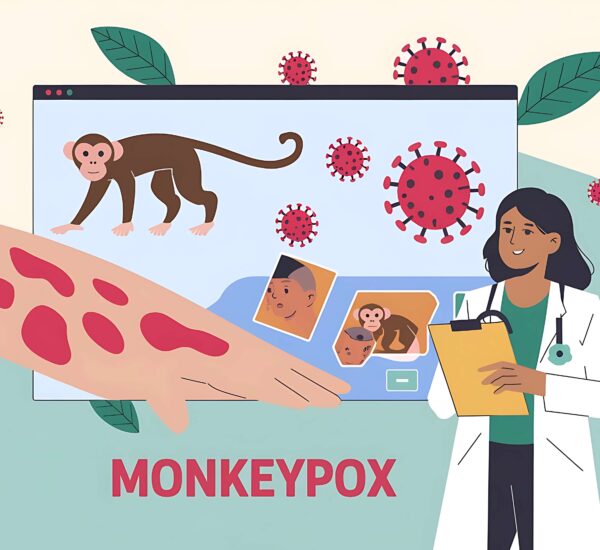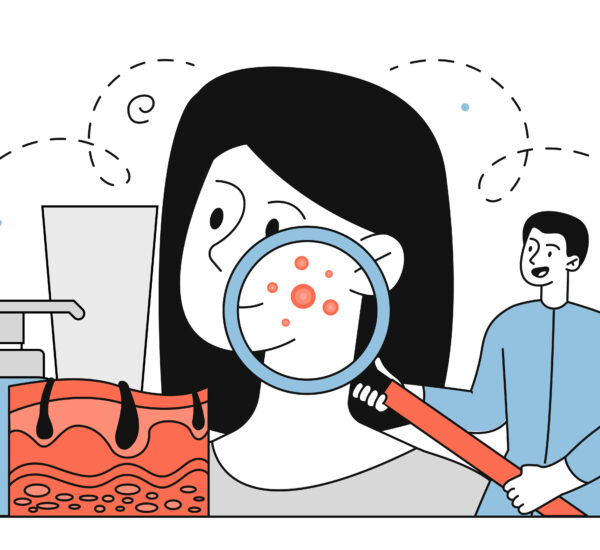Recovering from Mpox can be challenging, and ensuring a safe, full recovery requires proper aftercare. As Mpox cases have risen in the Philippines, understanding Mpox aftercare is essential for Filipino patients, especially those recovering at home. While Mpox symptoms vary from mild to severe, patients must follow specific recovery steps to prevent recurrence or complications. This guide will cover key aspects of Mpox recovery. Let’s begin!
Mpox Aftercare Basics: Essential Steps for Recovery

During the initial stages of recovery, Mpox patients often focus on managing symptoms such as skin lesions, fever, and general discomfort. However, Mpox aftercare commonly comprises steps to take towards the end of the Mpox, such as protocols for alleviating symptoms and reducing the risk of complications.
Here are some of the ideal Mpox recovery tips to try.
Managing Skin Lesions Safely
One of the severe symptoms of Mpox is a rash. This skin condition can look like smallpox but with bigger blisters. When the rash from Mpox spreads, it is essential to carefully dress and clean the lesions until they complete their progress. The process involves beginning with red spots and progressing to fluid-filled blisters that eventually scab over.
For better management of the skin lesions, the following care options are crucial:
- Cleanliness: Warm baths can help with the lesions. Gently clean lesions daily with mild soap and water, then pat dry to prevent infection.
- Bandaging: Cover lesions with sterile bandages and gauze, especially if they are open or prone to friction. Use disposable gloves while handling lesions to avoid spreading the virus to other body parts.
- Avoid scratching: Though it can be tempting, scratching lesions increase the risk of scarring and infection. For itching relief, consider using a doctor-recommended topical cream.
Proper wound care is essential to ensure fewer scars, infections, and full healing. If signs of infection (like redness, swelling, or pus) appear, seek medical advice immediately.
Hydration and Nutrition for Recovery
Aside from severe symptoms, the Monkeypox virus is also known for targeting people with weak immune systems. In that case, building it up is crucial to help protect yourself from the spread of Mpox.
Try to incorporate the following options in your routine to boost your immune function and tissue repair:
- Drink plenty of water: Fever and skin inflammation increase fluid needs, so aim for at least 8 glasses per day.
- Consume nutrient-dense foods: Vitamins C, E, and zinc-rich foods—like citrus fruits, leafy greens, and lean meats—boost immune function and skin healing.
- Avoid processed foods: Processed and sugary foods can weaken immune responses, delaying recovery.
Maintaining a balanced diet and proper hydration aids recovery, reducing fatigue, and supporting skin repair.
Getting Adequate Rest and Managing Fatigue
On the other hand, suffering from Mpox can also affect one’s strength leading to fatigue, restlessness, and more. Prolonged situations like this can affect the body’s overall health, making your immune system weaker. In that case, getting adequate rest is key to wellness.
Patients should try the following to ensure full recovery:
- Prioritize sleep: Aim for 7-9 hours of uninterrupted sleep per night, allowing the body to heal.
- Take breaks throughout the day: Avoid strenuous activities, and rest whenever you feel fatigued.
- Gradually increase activity levels: As energy returns, slowly reintroduce mild activities like walking to rebuild strength.
Listening to one’s body and balancing rest with light activity promotes a faster, more comfortable recovery process.
Preventing Mpox Recurrence: Precautions to Follow

While rare, recurrence can occur if the virus is reintroduced to the body. Following basic precautions helps reduce this risk.
Cleaning and Disinfection
A crucial point for preventing Mpox recurrence is knowing how to prevent contracting the disease. One way to do that is by expelling bacteria at home through disinfection. At the same time, if your community has high numbers of cases of Mpox, it’s best to stay at home. Both practices can help you prevent direct contact. Thus, ensuring your health and avoiding the possibility of getting infected again.
Using Personal Protective Equipment (PPE) When Necessary
In case one of your family members is infected by the Monkeypox virus, it’s best to use PPE. Using PPE effectively reduces the risk of reinfection through close contact.
Here are the PPEs you need to wear, especially in shared spaces:
- Disposable gloves: Wear them when handling bandages or cleaning lesions.
- Masks: If you need to interact closely with others, wear a mask to protect those around you.
- Clean clothes and linens: Change clothes daily, and wash bed linens regularly to avoid spreading the virus via contaminated materials.
Monitoring for Symptoms of Recurrence
It’s essential to monitor for any signs of Mpox recurrence even after recovery. Regular self-checks and monitoring for recurrence enable early intervention, improving recovery outcomes.
Signs of Mpox recurrence:
- Reappearance of lesions
- Persistent fever or fatigue
- Respiratory symptoms
Long-Term Health Management Post-Mpox

Recovery doesn’t end once symptoms subside. Ensuring long-term health management reduces the risk of complications and promotes overall wellness.
Following Up with Medical Care
Regular check-ups are recommended after Mpox recovery, especially if you experienced severe symptoms:
- Consult your doctor: Schedule a follow-up appointment within a month post-recovery.
- Monitor for complications: Report any ongoing issues, such as respiratory symptoms or persistent fatigue, to your healthcare provider.
- Seek supportive care: If you need assistance due to the impact of Mpox on your mental health, don’t hesitate to ask for help from an expert.
Frequently Asked Questions (FAQs)
How long does it take to recover from Mpox?
Recovery time varies depending on symptom severity. Mild cases may recover within two to four weeks, while severe cases could take longer. Following Mpox aftercare practices can facilitate a smoother recovery process.
Can Mpox recur after recovery?
Recurrence is rare but possible, especially in those with weakened immune systems. Practicing good hygiene, monitoring for symptoms, and following medical advice can help prevent recurrence.
Are there long-term effects of Mpox?
Most people recover fully, but some may experience lingering symptoms like fatigue or skin scarring. However, some patients may experience complications from Mpox due to poor management of the condition. Some of the known complications may involve pneumonia, encephalitis, etc. Following up with a healthcare provider can help address any persistent issues.
Conclusion
Mpox recovery requires a comprehensive approach that includes symptom management, preventive measures, and consistent aftercare practices. By focusing on the mentioned Mpox aftercare techniques you can boost your health better and prevent getting infected again.
Prioritizing post-recovery check-ups with healthcare providers further supports long-term well-being and provides peace of mind. Book an online consultation with an infectious disease doctor today!



